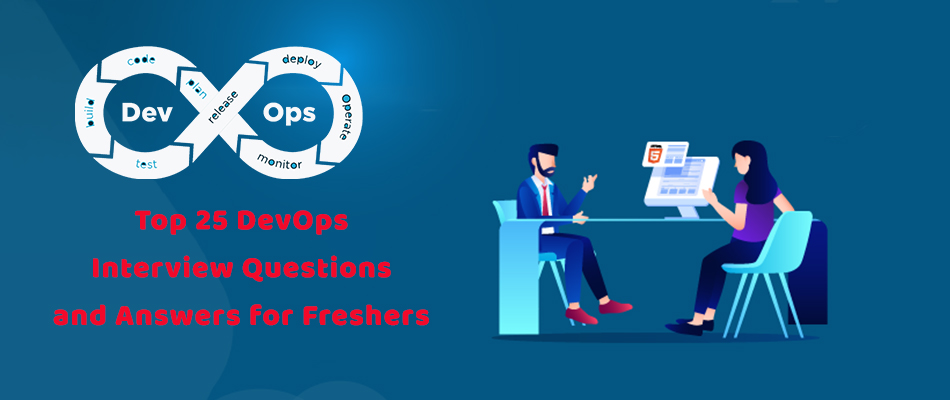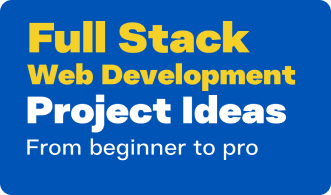Amongst the top trending buzzwords today, DevOps is a collaboration between the operations and the development team, ensuring they work together in harmony for faster and efficient delivery. Since the jobs in the sector are on a constant rise, one should seize the day and start their tech journey with the best.
Here is a list of the top DevOps interview questions and answers for freshers to help you ace that interview you have been sweating about!
Question 1. Where does the word DevOps come from?
Answer. The word DevOps comes by amalgamating two words – development and operations.
Question 2. What is DevOps?
Answer. A software engineering practice, the central purpose of DevOps is to strike a perfect balance between the development and the operations team to automate the project at all stages and ensure efficient delivery.
Question 3. What is the purpose of DevOps?
Answer. DevOps is a methodology and its main purpose is to increase the quality as well as the productivity of product development.
Question 4. What are the main tools used here?
Answer. Various tools are employed to ensure maximum benefit including –
- Version control system tools
- Containerization tools
- Continuous monitoring tools
- Continuous testing tools
- Continuous integration tools
- Configuration management & deployment tools
Question 5. Why is the demand for DevOps increasing?
Answer. With passing days, the market window of any given product is getting smaller at a significant rate. As the number of choices for consumers go up, the makers feel burdened due to the heavy competition. Hence, new and better products cannot be released at huge gaps.
With DevOps in the picture, automation increases and the working between the two departments of development and operations gets smoother.
Question 6. What does a company need to do to ensure customer satisfaction?
Answer. To ensure customer satisfaction, companies should –
- Reduce the time between bug fixes
- Frequent feature deployments
- Reduce the failure rate of releases
- Enhance recovery time in the case of a release failure
Question 7. What is SSH?
Answer. SSH is an abbreviation for Secure Shell. It is an administrative protocol that gives users the control to the remote servers over the internet, allowing them to working using the command line.
Question 8. What is the role or use of SSH?
Answer. SHH is used for remote user authentication, sending the desired output back to the customer and input communication between the host and the customer.
Question 9. What is configuration management about?
Answer. Configuration management, also called CM, is a practice ensuring systematic handling of all the changes in a desired way to enable the system in not losing its integrity over time. Change proposals are evaluated, managed and tracked by involving certain techniques, tools, procedures and policies.
It also aids in offering technical and administrative directions to the development and design of the appreciation.
Question 10. What is the full form of CAMS?
Answer. CAMS is the short-form of Culture, Automation, Measurement and Sharing.
Question 11. What does CAMS represent?
Answer. CAMS represents the central deeds of DevOps.
Question 12. Explain CI.
Answer. CI stands for Continuous Integration and is a software development practice to ensure codes are integrated by developers into a shared repository as soon as they are done with the feature.
An automated build process is used to verify each integration to make sure that a team is able to detect a problem in their code at the beginning stage rather than coming across it later or after the deployment.
Question 13. Why do we need Continuous Integration?
Answer. When continuous integration is incorporated in both testing and development, software quality has seen to be improved along with significant reduction in the time taken to deliver the features of a software.
Thus, errors and detected and fixed at initial stages rather than the end.
Question 14. Explain Continuous Testing in one line.
Answer. Continuous testing, also called CT is a phase of DevOps involving the course of running automated test cases as an aspect of an automated software delivery pipeline with the end purpose of getting rapid feedback about the validation and the quality of all the business risks linked with the automated build of the code that is being developed.
Question 15. Can you tell us any 3 important DevOps KPIs?
Answer. While there are many, the 3 important DevOps KPIs are –
- Increase deployment frequency at which the deployment happens
- Reduce the mean time taken to recover from any failure
- Reduce the percentage of failed deployments
Question 16. Name some of the most popular DevOps tools.
Answer. Some of the most popular DevOps tools are –
- Chef
- Ansible
- Selenium
- Jenkins
- Puppet
- Git
- Docker
Question 17. Name the various phases of the DevOps lifecycle.
Answer. The various phases of DevOps lifecycle are –
- Plan
- Code
- Build
- Test
- Integrate
- Deploy
- Operate
- Monitor
Question 18. Give me any 3 business benefits of DevOps.
Answer. Top three business benefits of DevOps are –
- Stable operating environments
- Rapider delivery of features
- Enhanced collaboration & communication amongst the teams
Question 19. Give any two technical benefits of DevOps.
Answer. Technical benefits of DevOps include –
- Early detection and correction of errors
- Continuous software delivery
Question 20. How does AWS affect DevOps?
Answer. AWS affects DevOps in the following ways –
- Offers flexible services
- Helps in automation of processes and tasks
- Supports a much larger ecosystem of partners
- Built for scale
- Enhance security
Question 21. Give me 3 benefits of automation testing.
Answer. Benefits of automation testing include –
- Huge test matrices are tested easily
- Helps in saving time and money
- Enables parallel execution
Question 22. Name the key elements of continuous testing tools.
Answer. Key elements of continuous testing tools are –
- Test optimization
- Advanced analysis
- Policy analysis
- Service virtualisation
- Risk assessment
- Requirements traceability
Question 23. What do you know about Memcached?
Answer. Memcached in a free and open-source in-memory object caching system offering high performance. It is generic in nature and majorly used to speed the dynamic web applications as it reduced the database load.
Question 24. What are the drawbacks of using Memcached?
Answer. Drawbacks of using Memcached include –
- Large objects cannot be cached
- If a failure occurs, all the data is lost
Question 25. Explain Resilience Testing.
Answer. It is a software process used to test an application for its behaviour under chaotic and uncontrolled scenarios. Its job also includes making sure that the functionality and the data are not lost upon encountering a failure.






